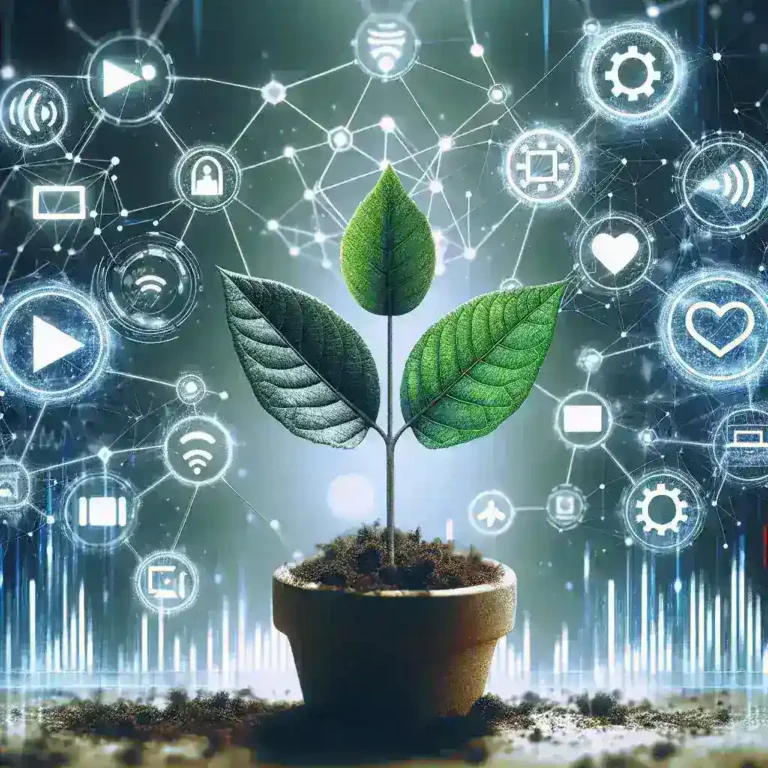The Future of Space Exploration: Tech Innovations Leading the Way
The future of space exploration is more exciting than ever, driven by groundbreaking technological innovations. As we prepare to explore further into the cosmos, these advancements are not just enhancing our ability to travel and conduct research but are also redefining our entire approach to space exploration.
The New Era of Space Exploration
Why Tech Innovations Matter
Technological advancements are critical for overcoming the challenges of space exploration. As we aim for deeper space missions, these innovations address several key issues:
- Efficiency: New propulsion systems and energy sources are enhancing fuel efficiency and reducing travel times.
- Autonomy: Advanced robotics and AI are enabling missions to distant destinations without continuous human oversight.
- Cost Reduction: Reusable rockets and private space companies are lowering the cost of space access.
- Safety: Improved materials and design innovations are increasing the safety of crewed missions.
Key Technological Innovations and Their Impact
| Innovation | Impact | Examples |
| Advanced Propulsion | Reduces travel time and fuel consumption | Ion thrusters, nuclear propulsion |
| Robotics and Automation | Enhances exploration and maintenance | Mars rovers, automated spacecraft systems |
| AI and Machine Learning | Improves data analysis and decision-making | Navigation algorithms, predictive models |
| Reusable Rockets | Cuts costs and increases launch frequency | SpaceX Falcon 9, Blue Origin New Shepard |
Emerging Technologies in Space Exploration
Advanced Propulsion Systems
Ion Thrusters
Ion thrusters represent a groundbreaking advancement in space propulsion. Unlike traditional chemical rockets, which rely on chemical reactions to produce thrust, ion thrusters use electrical energy to ionize and accelerate propellant. This technology offers significantly higher efficiency, allowing spacecraft to travel further with less fuel. Ion thrusters are particularly valuable for deep-space missions due to their ability to provide continuous thrust over long durations.
- Dawn Mission: One of the most notable uses of ion propulsion was the Dawn spacecraft, which explored the asteroid belt and provided valuable data on Ceres and Vesta. Dawn’s ion propulsion system enabled it to change orbits and achieve precise maneuvering, demonstrating the technology’s effectiveness for complex missions.
- Advantages: Ion thrusters offer higher efficiency and longer mission durations compared to chemical rockets. They are capable of maintaining thrust over extended periods, which is crucial for deep-space missions that require precise trajectory adjustments and long-term space travel.
Nuclear Propulsion
Nuclear propulsion represents a significant leap forward in spacecraft speed and efficiency. By utilizing nuclear reactions to generate thrust, nuclear propulsion systems can potentially reduce travel times for interplanetary missions and increase payload capacities.
- Reduce Travel Time: Nuclear propulsion has the potential to shorten the journey to Mars and other distant destinations. With faster travel times, missions can be completed more quickly, reducing the duration of space travel and exposure to space hazards.
- Increase Payload Capacity: The increased efficiency of nuclear propulsion allows spacecraft to carry more equipment or crew. This capability is essential for missions that involve complex scientific instruments or require a larger crew for long-duration explorations.
Robotics and Automation
Robotic Landers and Rovers
Robotics play a pivotal role in space exploration, enabling the investigation of distant celestial bodies without human presence. Robotic landers and rovers have provided unprecedented insights into the environments of other planets and moons.
- Perseverance Rover: Launched by NASA, the Perseverance rover is equipped with advanced scientific instruments to search for signs of past life on Mars. It also carries technology for future human exploration, including a system to produce oxygen from the Martian atmosphere.
- Curiosity Rover: Another notable rover, Curiosity has been analyzing Martian soil and atmosphere since its landing in 2012. Its findings have contributed significantly to our understanding of Mars’ geology and potential habitability.
Automated Spacecraft Maintenance
Automation is crucial for maintaining spacecraft and space stations. Automated systems are designed to perform routine checks, conduct repairs, and manage systems without the need for constant human intervention. This capability enhances mission efficiency and reduces the risk of system failures.
- Routine Checks: Automated systems continuously monitor spacecraft health and performance, identifying potential issues before they become critical.
- Repairs: Automation allows for the execution of repairs and maintenance tasks, ensuring that spacecraft remain operational throughout their mission.
Artificial Intelligence and Machine Learning
AI in Navigation and Data Analysis
Artificial intelligence (AI) is transforming space exploration through advanced navigation and data analysis capabilities. AI algorithms are capable of processing vast amounts of data generated during space missions, identifying patterns, and making real-time decisions.
- Data Processing: AI enhances the ability to analyze complex data sets from space missions, enabling more accurate interpretations and better scientific outcomes.
- Real-Time Decisions: AI assists in making real-time adjustments to spacecraft trajectories, optimizing mission operations and responding to dynamic conditions in space.
AI-Driven Decision Making
AI also plays a significant role in improving decision-making processes for space missions. By simulating various scenarios and outcomes, AI helps mission planners and astronauts make informed decisions.
- Trajectory Adjustments: AI algorithms can calculate the most efficient trajectory adjustments, improving mission accuracy and efficiency.
- Handling Challenges: AI-driven systems provide solutions for unexpected challenges, enhancing the ability to respond to unforeseen issues during space missions.
Private Sector Contributions
SpaceX and the Reusable Rocket Revolution
Falcon 9 and Falcon Heavy
SpaceX has revolutionized space travel with its reusable rocket technology. The Falcon 9 and Falcon Heavy rockets are designed to return to Earth and be reused, which has drastically reduced launch costs and increased mission frequency. The Falcon 9 was the first orbital-class rocket to land vertically and be reused, making space more accessible. Falcon Heavy, with its powerful triple-core design, supports heavy payloads for ambitious missions like launching large-scale space telescopes.
This approach has enabled more frequent launches and lower costs for satellite deployments and ISS resupply missions. SpaceX’s reusability innovations have significantly impacted the commercial spaceflight industry, allowing for more affordable and reliable access to space.
Starship and Mars Colonization
SpaceX’s Starship is the next step in space exploration. Designed to be fully reusable, Starship aims to facilitate interplanetary travel and Mars colonization. With the capability to carry up to 100 passengers or substantial cargo, Starship represents a major advancement toward making human settlements on Mars possible. Its development is a crucial part of SpaceX’s long-term vision to expand human presence in the solar system.
Blue Origin and Beyond
New Shepard and Suborbital Flights
Blue Origin, led by Jeff Bezos, is advancing space travel with its New Shepard rocket. Designed for space tourism, New Shepard offers short, suborbital flights that reach the edge of space, allowing passengers to experience weightlessness and see Earth from above. The rocket’s reusable design supports multiple flights, reducing costs and making space tourism more feasible.
Blue Origin’s vision goes beyond suborbital flights, aiming to develop space habitats for extended stays in low Earth orbit. These habitats would provide unique experiences, such as living in space and participating in scientific research. This vision represents a significant step toward making space tourism a common reality.
International Collaborations
The Role of International Space Agencies
NASA’s Artemis Program
NASA’s Artemis program is a major initiative aimed at returning humans to the Moon and establishing a sustainable presence:
- Objectives: Reestablish lunar exploration, conduct scientific research, and prepare for future Mars missions.
- International Collaboration: Involves partnerships with space agencies like ESA, JAXA, and CSA.
Artemis Program Goals and Partners
| Goal | Description | Partners |
| Lunar Exploration | Return humans to the Moon | ESA, JAXA, CSA |
| Lunar Gateway | Establish an orbiting lunar space station | International partnerships |
| Mars Preparation | Develop technologies for Mars missions | NASA, international partners |
ESA’s ExoMars Mission
The European Space Agency’s ExoMars mission aims to explore Mars and search for signs of past life:
- Objectives: Investigate Martian surface conditions and potential biosignatures.
- Collaborators: Partnership with Russia’s Roscosmos for mission execution.
List of ExoMars Mission Goals:
- Rover Exploration: Analyze Martian soil and geology.
- Orbital Studies: Examine Mars’ atmosphere and surface.
The Importance of Global Partnerships
Joint Missions and Shared Resources
International partnerships are crucial for undertaking complex missions and sharing resources:
- Shared Expertise: Combining knowledge from various space agencies enhances mission success.
- Cost Sharing: Pooling resources reduces individual costs and risks.
Examples of International Collaborations
| Mission | Participants | Shared Goals |
| ISS | NASA, ESA, JAXA, Roscosmos, CSA | Conducting scientific research in space |
| Lunar Gateway | NASA, ESA, JAXA, CSA | Building an orbiting lunar outpost |
Future Trends and Predictions
Space Mining and Resource Utilization
One of the most exciting future trends is space mining. The prospect of extracting valuable resources from asteroids and other celestial bodies could revolutionize industries on Earth and support long-term space missions.
The Possibility of Human Habitats in Space
Another area of interest is the development of human habitats in space. Research is underway to create sustainable living conditions on the Moon, Mars, and beyond, potentially allowing humans to live and work in space for extended periods.
The Long-Term Vision for Space Exploration
Looking further ahead, the long-term vision for space exploration includes deep space missions, potential contact with extraterrestrial life, and the establishment of permanent human settlements. These goals, driven by technological innovation, promise to expand our understanding of the universe and our place within it.







